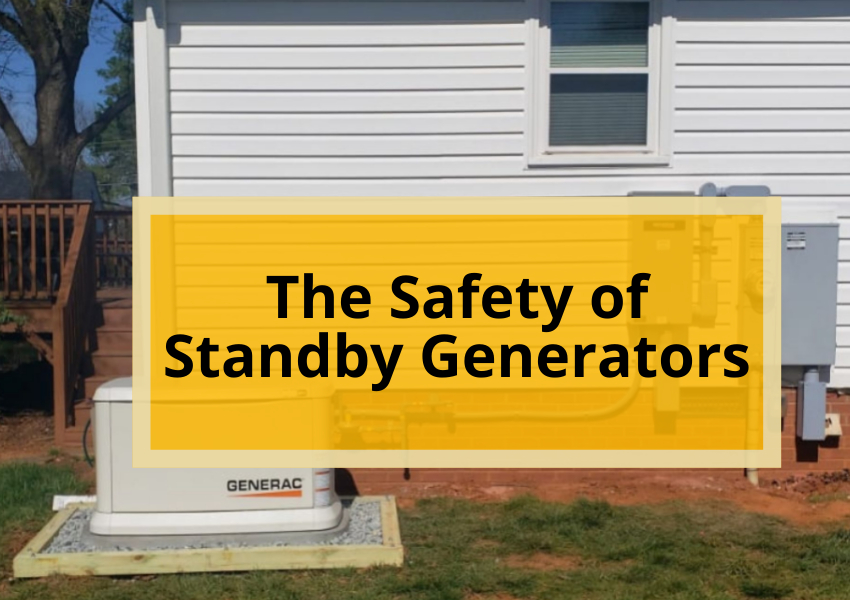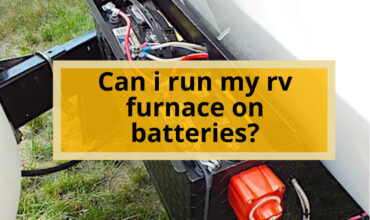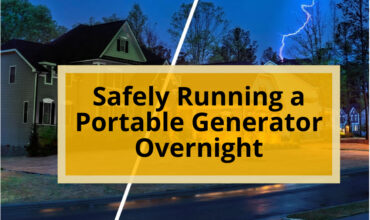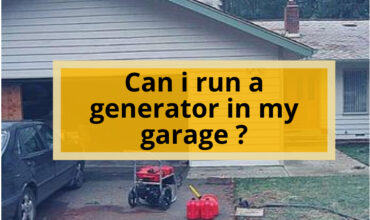Standby generators provide backup power in the event of a power outage. They automatically turn on when the power goes out, allowing you to continue running essential appliances and equipment. Though standby generators are very useful, some people have concerns about their safety. This article will examine the main safety considerations regarding standby generators and provide tips for using them securely.
How Standby Generators Work
A standby generator is permanently installed outside or in a garage and connected to your home’s electrical system. It runs on propane, natural gas or diesel fuel. When the power goes out, the generator automatically detects the outage through a transfer switch. It then starts up and begins supplying electricity to your home’s electrical panel within seconds.
The generator will run as long as needed until utility power returns. Once the power is back on, an automatic transfer switch turns off the generator and switches back to the utility power source. This switch prevents backfeed, which could electrocute utility workers trying to restore power.
Benefits of standby generators
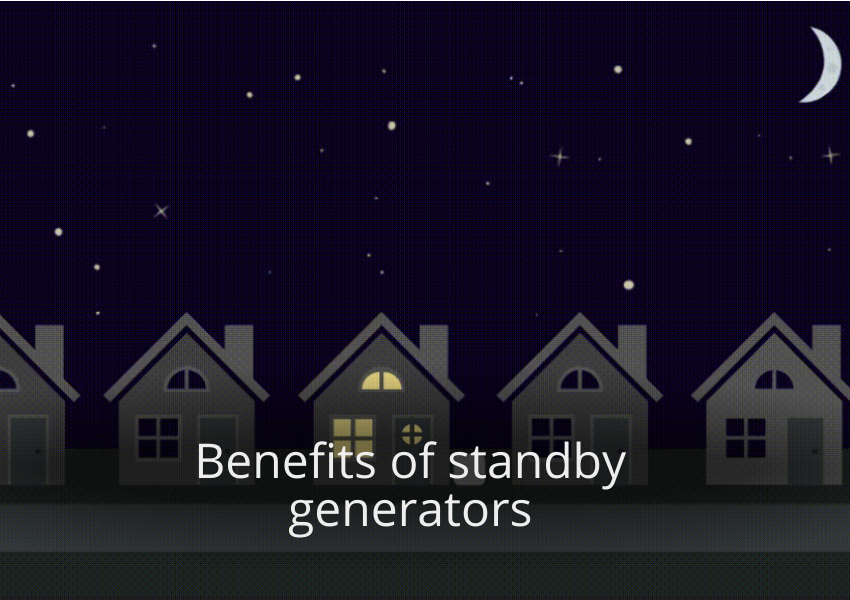
Despite the potential hazards, standby generators offer a number of benefits, including:
- Peace of mind: Knowing that you have a standby generator can give you peace of mind during power outages. You won’t have to worry about losing power to your essentials, such as your refrigerator, freezer, and air conditioning.
- Safety: Standby generators can help to keep you and your family safe during power outages. For example, if you have a medical condition that requires electricity, a standby generator can ensure that you have the power you need.
- Convenience: Standby generators are convenient and easy to use. They turn on automatically when the power goes out and turn off when the power comes back on.
Also read: Can I Backfeed My Generator?
Potential hazards of standby generators
The following are some of the potential hazards of standby generators:
- Carbon monoxide poisoning
Standby generators produce carbon monoxide, a colorless, odorless gas that can be deadly. If a generator is not properly ventilated, carbon monoxide can build up in enclosed spaces, such as garages and basements.
This can lead to carbon monoxide poisoning, which can cause symptoms such as headache, dizziness, nausea, and vomiting. In severe cases, carbon monoxide poisoning can lead to coma and death.
- Electric shock
Standby generators produce electricity, which can pose a risk of electric shock. It is important to follow all safety precautions when using a standby generator, such as wearing gloves and insulated shoes, and avoiding contact with wet surfaces.
- Fire hazard
Standby generators can be a fire hazard if not properly maintained. One major safety concern with standby generators is fire. Generators can overheat, ignite flammable materials nearby or produce carbon monoxide that leads to poisoning risks.
It is important to keep the generator area clean and free of debris, and to regularly inspect the generator for any signs of damage.
Also read : Stay Safe: Portable Generator Grounding Guidelines
How to Avoid Fire hazard?
- Essential key tips to prevent fires
– Allow sufficient ventilation around the generator to prevent overheating. Do not enclose it or run it indoors.
– Keep the generator a safe distance from your home, plants, vehicles or other flammable items. Maintain at least 5 feet of clearance.
– Refuel the generator only when it’s cooled down and off. Don’t overfill the tank. Clean up any spilled fuel immediately.
– Know how to use the emergency stop switch in case of overheating or odd smells emanating from the unit.
– Install a carbon monoxide detector near sleeping areas in case exhaust leaks into your home.
- Proper Installation
Most fires and accidents with standby generators happen because they weren’t installed properly. Always hire a licensed electrician or contractor to install your unit. Improper installation can lead to backfeed, electrocution, fires or generator damage.
The generator needs to be securely anchored on a level surface of concrete or gravel. The transfer switch and electrical connections must be done correctly to isolate the generator from utility power. Inspections are required in many regions to ensure compliance with electrical codes.
How to use standby generators safely
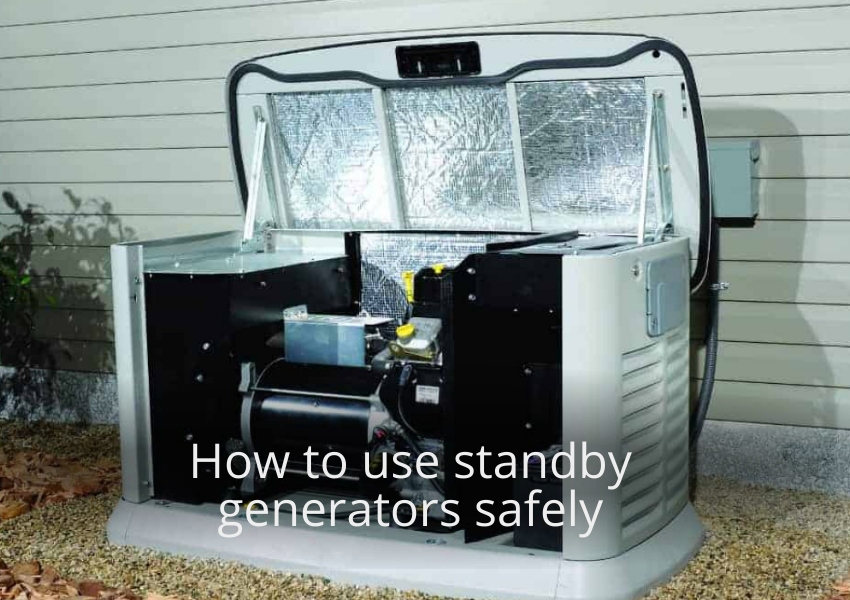
To reduce the risks associated with standby generators, it is important to follow these safety precautions:
- Install the generator in a well-ventilated area
The generator should be installed in a well-ventilated area, such as outdoors or in a garage with the door open. Never operate a generator in an enclosed space, such as a basement or crawlspace.
- Ventilate the generator exhaust
The generator exhaust must be properly ventilated to prevent carbon monoxide from building up in enclosed spaces. The generator should be equipped with a carbon monoxide detector, which will sound an alarm if carbon monoxide levels become dangerous.
- Use a transfer switch
A transfer switch is a device that safely isolates your home’s electrical system from the utility grid when the generator is running. This prevents backfeeding, which can energize the utility lines and pose a hazard to line workers.
- Follow the manufacturer’s instructions
Be sure to read and follow the manufacturer’s instructions carefully when installing and operating your standby generator.
Also read : Do I Need a Transfer Switch for My Generator?
Additional safety tips
Here are some additional safety tips for using standby generators:
- Never operate a generator in wet weather
If the generator or the surrounding area is wet, there is an increased risk of electric shock.
- Keep the generator away from children and pets
Generators can be hot and noisy, and pose a potential hazard to children and pets. Keep the generator area clear and supervised at all times.
- Regularly maintain the generator
Have your standby generator inspected and serviced by a qualified technician on a regular basis. This will help to ensure that the generator is operating safely and efficiently.
- Use the correct generator size
Make sure to choose a generator that is the right size for your needs. A generator that is too small will not be able to power all of your appliances, while a generator that is too large will be wasteful and may not be compatible with your home’s electrical system.
- Locate the generator in a safe place
Place the generator on a level surface in a well-ventilated area. Avoid placing the generator near flammable materials or in areas where it could be flooded.
- Store fuel safely
Standby generators typically run on gasoline or diesel fuel. Store fuel in approved containers in a safe location away.
Safe Generator Operation
When operating your standby generator, follow these tips:
– Turn off and unplug sensitive electronic devices to prevent damage from voltage spikes when power is restored.
– Only operate appliances and equipment that are necessities during an outage. The generator capacity has limits.
– Turn individual circuits on or off as needed rather than powering everything at once.
– Do not try to connect the generator directly to your home’s wiring. Use the pre-installed transfer switch only.
– Check that extension cords used outside are rated for outdoor use to prevent shorts.
– Do not overload the generator. Exceeding its wattage capacity can damage the unit or cause fires.
– Refuel only when the unit has been turned off and has cooled.
Generator Safety Devices
Modern standby generators contain safety features to prevent common accidents:
– Voltage regulators maintain consistent electrical output and prevent power surges.
– Automatic low-oil shutdown protects the engine if oil gets too low.
– Overload protection shuts the generator down if it exceeds capacity to prevent damage.
– Cooling fans and enclosures prevent the generator from overheating even under heavy loads.
– Battery chargers keep the starting battery ready.
– Steel or aluminum enclosures prevent contact with hot or moving parts.
Maintenance and Testing
Follow the manufacturer’s maintenance guidelines for your generator model. This typically involves periodic inspections, oil changes, filter replacements and function tests. Testing the generator monthly ensures it will operate when needed. Replace the battery every 3-4 years.
Register your generator with the manufacturer so you receive any product recalls or safety notices that arise. Keep a maintenance log showing dates of service, tests and operating hours. Consider an annual service contract with a generator specialist.
Conclusion
Standby generators provide reliable backup power to keep your home running during outages. While very useful, generators must be properly maintained, installed and operated to ensure fire and electrocution risks remain low.
Follow the manufacturer’s guidelines and safety tips outlined above, and hire a professional electrician to install your generator. With adequate precautions, your standby generator can safely and automatically provide electricity to protect you and your family when utility power fails.
FAQ’s
Are standby generators safe for sensitive electronics?
Standby generators can produce power surges, which can damage sensitive electronics such as computers and televisions. To protect your electronics, it is important to install a surge protector between the generator and your home’s electrical system.
How can I prevent getting shocked from my standby generator?
Hire an electrician to properly install a transfer switch, which prevents backfeed. Never directly connect the generator to household wiring. Use grounded extension cords rated for outdoor use. Turn off or unplug sensitive electronics when restoring power.
How often should I test and maintain my standby generator?
Test it monthly and run it under load for at least 30 minutes. Follow the maintenance schedule for oil/filter changes, battery replacement, inspections, etc. Keep a log of maintenance and run hours.
Can I install a standby generator myself?
No. Always hire a licensed electrician or generator specialist to install it. Improper installation can cause backfeed, electrocution, fires, or damage to the generator or your home’s electrical system.
How far should my generator be from my home?
Allow at least 5 feet of clearance around the generator to prevent fire risks. Do not operate it indoors or in an enclosed area. The exhaust contains deadly carbon monoxide.
